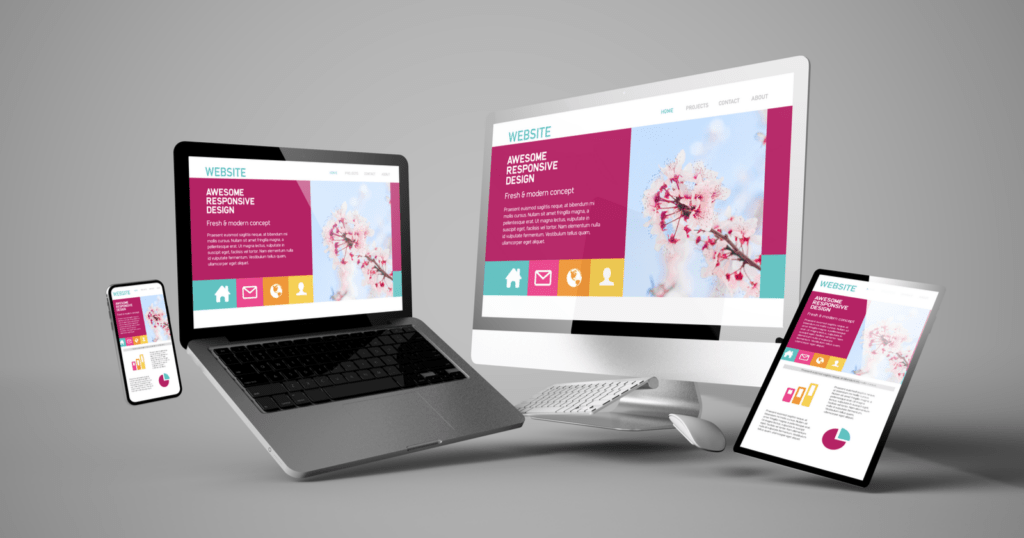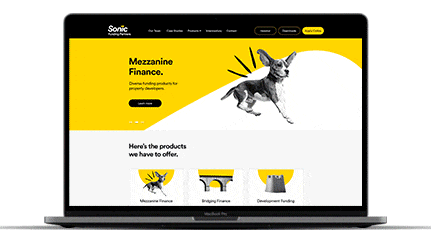Leading Tips for Developing an Impactful Website Design That Converts
In today's electronic landscape, the value of an impactful website style can not be overstated, specifically when it involves transforming visitors into clients. To accomplish this, one need to take into consideration a selection of aspects, consisting of recognizing the target market, focusing on user experience, and enhancing for mobile platforms. The calculated usage of compelling call-to-actions and a well-defined visual hierarchy plays a vital function in assisting individuals with their journey. As we check out these crucial components, it comes to be noticeable that the success of your web site rests on greater than just appearance; it calls for a thoughtful technique to style and functionality.

Understand Your Target Market
Comprehending your target audience is basic to efficient site design, as it lays the foundation for producing an appealing user experience. Recognizing that your users are, including their demographics, choices, and actions, allows developers to tailor the web site's web content, design, and performance to meet particular requirements.
Performing detailed market research study is critical in this procedure. Surveys, meetings, and analytics can provide beneficial insights right into customer expectations and discomfort points. By compiling this information, designers can produce customer personalities that stand for different sections of the target market, guaranteeing that layout decisions are notified and pertinent.
Additionally, recognizing the target market helps in choosing appropriate style components such as color systems, typography, and imagery that resonate with customers. A site that talks directly to its audience cultivates a sense of link and trust, motivating longer brows through and higher conversion rates.
Inevitably, a user-centered approach to site layout not only improves user contentment however likewise sustains company goals by driving involvement and loyalty. By focusing on the demands and preferences of the target market, a site can properly offer its purpose and accomplish wanted outcomes.
Prioritize User Experience
To enhance the overall effectiveness of a site, focusing on user experience (UX) is vital (Website Design). A well-designed UX makes certain that site visitors can browse the website easily, locate details promptly, and engage with content meaningfully. This brings about boosted individual fulfillment and greater conversion rates
Begin by executing intuitive navigation. Menus needs to be practically structured, permitting individuals to find key locations of the website with very little effort. Consistency in design components, such as color pattern and fonts, cultivates knowledge, which is vital for preserving user engagement.
In addition, think about the loading rate of your web site. A delay of simply a few seconds can bring about considerable drop-offs, as users are much less likely to await a slow-loading page. Enhancing images and optimizing code can improve performance and maintain visitors.
By prioritizing individual experience, you not just develop a more pleasurable atmosphere for site visitors yet additionally strengthen your brand's trustworthiness. Eventually, an emphasis on UX is a financial investment in the lasting success of your internet site.
Optimize for Mobile Gadgets
Enhancing for mobile phones is vital in today's electronic landscape, where an increasing number of users access web sites with smart devices and tablet computers. A mobile-friendly layout not just boosts customer experience yet additionally plays a substantial duty in boosting search engine rankings. To achieve this, it is important to adopt a responsive design that immediately gets used to different display dimensions and alignments.

Loading rate is an additional critical variable; mobile customers are normally less client and expect rapid accessibility to info. Enhance pictures and leverage internet browser caching to enhance performance. Examination your website on numerous gadgets and screen resolutions to determine and rectify any kind of prospective use issues. By focusing on mobile optimization, you make sure that your website continues to be competitive and properly engages a more comprehensive audience.
Use Engaging Call-to-Actions
A website's effectiveness usually hinges on its capability to lead site visitors towards desired actions, making compelling call-to-actions (CTAs) necessary parts the original source of design. CTAs act as the critical factors that route customers to engage with the site, whether that means making an acquisition, enrolling in an e-newsletter, or downloading and install a source.
To develop reliable CTAs, clarity is paramount. Use concise language that clearly interacts the action you desire the individual to take. Expressions such as "Get going," "Register Free," or "Store Now" not just share necessity yet additionally eliminate uncertainty. The placement of CTAs is similarly crucial; they need to be strategically placed throughout the webpage to ensure they are easily visible, particularly in high-traffic areas.
Additionally, the style of CTAs ought to attract attention without being obtrusive. Employ contrasting colors and clear font styles to ensure they catch focus. In addition, take into consideration making use of directional signs, such as arrowheads or images, to guide customers towards these switches. By focusing on these elements, companies can substantially boost customer interaction, driving conversions and ultimately achieving their website's goals.
Concentrate On Visual Pecking Order
Effective website design relies heavily on a well-structured visual hierarchy that overviews customers with material perfectly. By arranging aspects in a manner that focuses on details, designers can boost user experience and promote decision-making. This entails utilizing size, shade, contrast, and spacing tactically to accentuate the most critical parts of a website.
The usage of bigger font styles for headings and subheadings develops a clear distinction in between different sections, permitting individuals to scan material easily. Additionally, utilizing different colors for switches and calls-to-action can record user focus and encourage communication. Whitespace is an additional necessary element; it stops clutter and allows individuals to concentrate on vital messages without disturbances.
Images and graphics must enhance the message while additionally sticking weblink to the established hierarchy, reinforcing the overall message (Website Design). Consistency in design elements, such as color pattern and typography, further strengthens the visual hierarchy, content making navigating instinctive

Verdict
In final thought, effective web site design demands an extensive understanding of the target audience, prioritization of customer experience, and mobile optimization. Eventually, a well-executed website style offers as an important component in driving individual activities and accomplishing organization goals.